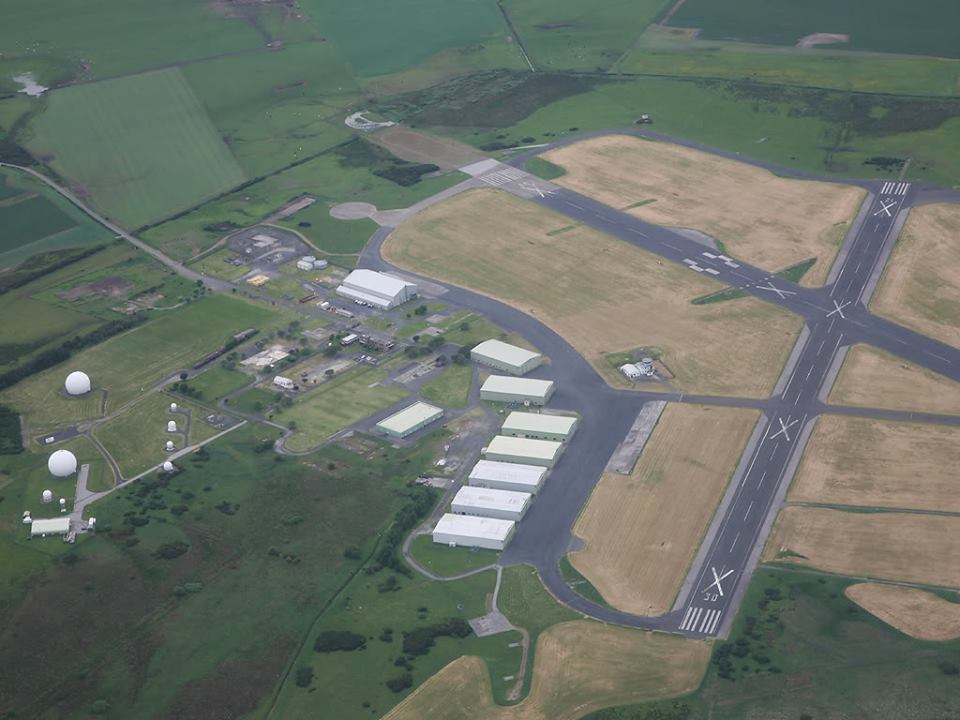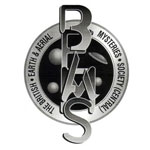April 1957: UFO Incident
RAF West Freugh, Wigtownshire, South-West Scotland, UK
RAF West Freugh Wigtownshire - During the First World War the site was a base for naval airships, known as RNAS Luce Bay. The base was provided with one huge airship hangar.
RAF West Freugh opened in 1937 as an armament training camp. During the Second World War, it expanded to include training facilities for observers, navigators, and bomb aimers; and served as a base for the Bombing Trials Unit. The known history of units known at West Freugh is:
22
October 1939 - 10 Service Flying Training School formed.
Moved November 4 November 1939 - 4 Air Observer School formed.
11 January 1940 - re-designated 4 Bombing & Gunnery School.
14 June 1941 - 4 Air Observer School reformed.
11 June 1943 - re-designated 4 Observer Advanced Flying Unit.
21 June 1945 - 4 Observer Advanced Flying Unit disbanded.
April 1957 - RAF West Freugh incident.
2001 - Airfield closed, all RAF operations cease.
2001 - operations taken over by QinetiQ.
The West Freugh Incident!
In April 1957, while monitoring a test bombing exercise, radar units of the Ministry of Supply Bombing Trials Unit headquartered at RAF West Freugh observed the UK's most reported UFO incident.
Awaiting a test over Luce Bay from an aircraft RAE Farnborough, the civilian radar operators of the Ministry of Supply were told to turn their sets off due to a delay.
One unit at Balscalloch near Corsewall Point did not receive the signal. They observed a large and solid unidentified echo, an almost stationary object, located above the Irish Sea. It remained stationary for 10 minutes at an initial height of 50,000 feet (15,000 m), 20 to 25 miles (40 km) north of Stranraer; its height then increased to 70,000 feet (21,000 m). The Balscalloch Unit contacted West Freugh air traffic control and informed the controller that there were now several moving targets. These were moving at speeds of thousands of miles per hour, and the echoes were like nothing the radar operator had ever seen before.
West Freugh observed the targets, as did the now switched-on Ardwell Unit (14 miles to their south), confirming the observation. After ten minutes, the position begun to move north-east at speeds gradually increasing up to 70 mph (110 km/h), and at a height of 54,000 feet (16,000 m). A third radar station then confirmed the target, and noted that after the radar echo had travelled about 20 miles (32 km), it did an "impossible" sharp turn and proceeded in a south-easterly direction whilst increasing its speed. The third station then tracked four objects at 14,000 feet (4,300 m) altitude and 4000 yards line astern from each other, which was confirmed by Balscalloch. The radar operators noted the echoes were much larger than those of normal planes, size being nearer to that of a ship.
RAF intelligence ordered radar stations throughout the UK to be on 24-hour alert. A few days later, civilian operators reported the incident to various newspapers including the Sunday Dispatch, which published the incident on 7 April 1957. An Air Ministry spokesman declined to make a detailed statement until a full report had been studied by experts, while Wing Commander Walter Whitworth, RAF West Freugh Commanding Officer, made an Air Ministry approved statement.
"I have been ordered by the Air Ministry to say nothing about the object. I am not allowed to reveal its position, course and speed. From the moment of picking it up, it was well within our area. It was an object of some substance - quite definitely not a freak. No mistake could have been made by the [Ministry of Supply] civilians operating the sets. They are fully qualified and experienced officers."
Questions were asked in Parliament and the Air Ministry were eventually obliged to admit they were unable to explain the incident. As the incident had leaked to the press, internal RAF records were well preserved, although details of official records are protected by the Official Secrets Act However, in an RAF meeting minutes document of 1970, Whitworth additionally commented that:
"After remaining stationary for a short time, the UFO began to rise vertically with no forward movement, rising rapidly to approximately 60,000 feet (18,000 m) in much less than a minute. The UFO then began to move in an easterly direction, slowly at first but later accelerating very fast and traveling towards Newton Stewart, losing height on the way. Suddenly the UFO turned to the southeast, picking up speed to 240 mph (390 km/h) as it moved towards the Isle of Man. It was at this stage that the radar signals became contradictory. Balscalloch tracked a single 'object' at high altitude while Ardwell picked up what appeared to be four separate objects moving line astern behind each other at a height of 14,000 feet (4,300 m). As the echoes disappeared; all three radars fleetingly traced the four smaller UFOs 'trailing' behind the larger object. The UFO had been tracked for 36 minutes."
The station was also used, during the Summer of 1957, to house airmen deployed on Operation Hardrock, which was the name given to establishing a rocket tracking station on the island of Hirta in the St Kilda archipelago. Airmen were driven daily to Cairnryan Military Port and those, destined for St.Kilda, were shipped out on Mk VIII LST's (landing ship tank).
References:
Mull
of Galloway History Myths & Legends, JJA Hennesey UFO Sightings
1957
Image - Google Images - SBAW - K



